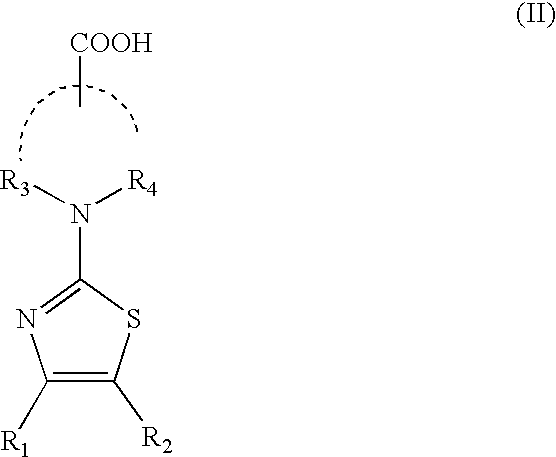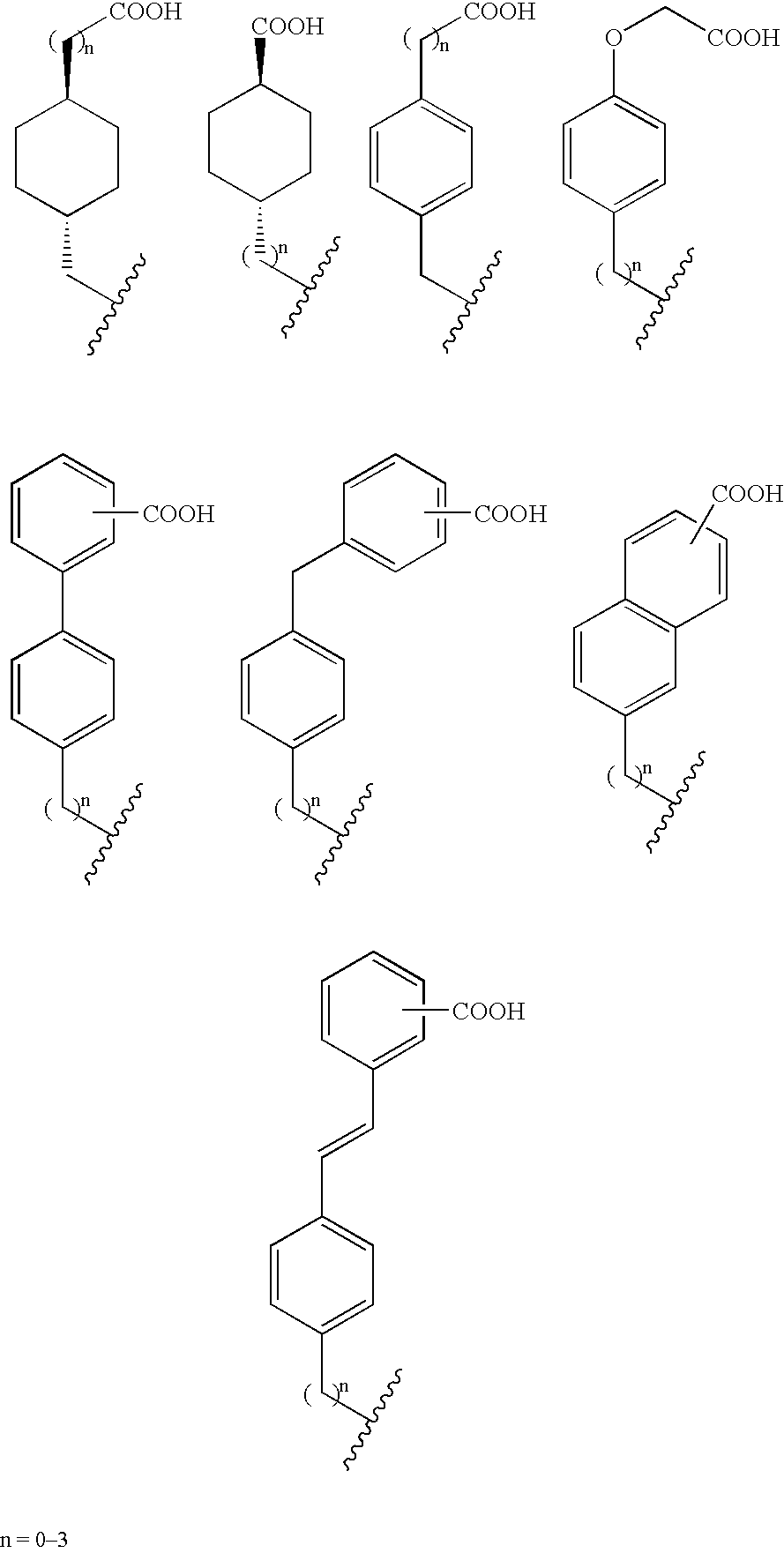NR1H4 nuclear receptor binding compounds
a nuclear receptor and binding compound technology, applied in the field of nr1h4 nuclear receptor binding compounds, can solve the problems of cellular differentiation, proliferation, or reproduction, and the transmission of highly complex signals
- Summary
- Abstract
- Description
- Claims
- Application Information
AI Technical Summary
Benefits of technology
Problems solved by technology
Method used
Image
Examples
example 1
[0089]For in vitro screening for compounds which influence FXR binding to coactivators, a fragment of the open reading frame of human FXR alpha (NR1H4-(Acc. No:AF384555)) encoding aminoacids 187-472 was amplified by standard RT PCR procedures (see SEQ ID NOS. 1 and 2 in FIGS. 4A and 4B, respectively). The starting material was total RNA derived from human liver. The resulting cDNA obtained after reverse transcription was subsequently cloned using the Gateway™ recombination technology (Invitrogen, USA) into the expression plasmid pDest15 (Invitrogen, USA). This construct was used to express a recombinant GST-FXR fusion protein in E. coli (BL21 strain). A pDEST 17 derivative clone harboring an additional sequence encoding amino acids 548-878 of human TIF2 (Acc. No: XM—011633 RefSeq) was constructed using Gateway™ recombination technology (Invitrogen, USA) in order to obtain a construct which was used to express recombinant His-tagged TIF2 fragment in E. coli. For E. coli expression of...
example 2
[0096]The following steps describe the experimental procedure for the preparation of the compounds according to the invention utilizing ArgoGel-MB-CHO resin. The synthesis scheme is shown in FIGS. 1A and 1B.
Step 1. Synthesis of Chalcone (compound 1)
[0097]To a solution of acetophenone (0.05 mol) and aldehyde (0.05 mol) in 150 ml of MeOH was added 2.5 eq of NaOH as pellets. The reaction bottle was placed on a shaker (slightly exothermic reaction) for 24-48 hrs. Then the reaction container was placed in an acetone-ice bath (−5 to 0° C.) and the reaction mixture was quenched with 10.3 ml of 37% aqueous HCl (2.5 eq). Solvent was removed in vacuo and the residue was partitioned between EtOAc and water. The aqueous layer was discarded and the organic layer was washed with water, brine and dried over Na2SO4. Solvent was removed in vacuo and the crude chalcone (compound 1) was recrystallized from methanol (MeOH) or a mixture of hexane and ethyl acetate (Hex:EtOAc) 3:1 or purified by silica g...
example 3
[0105]Experimental procedure for the preparation of the compounds according to the invention utilizing Wang resin. The synthesis scheme is shown in FIG. 2.
Step 1. Immobilization of a carboxylic acid (compound 11) on Bromo-Wang resin
[0106]Bromo-Wang resin (100 mg each tea-bag, 1.00 mmol / g substition) was swollen in anhydrous DMF. A carboxylic acid (compound 11) (5 eq.) was added, followed by potassium iodide (5 eq) and cesium carbonate (5 eq), and the bottle(s) placed in an oven-shaker at 80° C. for 3 days. Then the reaction mixture was decanted and the resin was washed as follows: DMF (4×), MeOH (4×), CH2Cl2 (2×) and then allowed to air dry to form resin compound 12.
Step 2. Preparation of the resin-bound thioureas (compound 15)
[0107]Resin compound 12 was placed in a bottle and the resin compound was swollen in 20% piperidine in DMF (5 eq). Tea-bags were placed in the bottle and the bottle was placed on a shaker at room temperature for one hour. Then the resin was washed with DMF (3×...
PUM
| Property | Measurement | Unit |
|---|---|---|
| total volume | aaaaa | aaaaa |
| volume | aaaaa | aaaaa |
| pH | aaaaa | aaaaa |
Abstract
Description
Claims
Application Information
 Login to View More
Login to View More - R&D
- Intellectual Property
- Life Sciences
- Materials
- Tech Scout
- Unparalleled Data Quality
- Higher Quality Content
- 60% Fewer Hallucinations
Browse by: Latest US Patents, China's latest patents, Technical Efficacy Thesaurus, Application Domain, Technology Topic, Popular Technical Reports.
© 2025 PatSnap. All rights reserved.Legal|Privacy policy|Modern Slavery Act Transparency Statement|Sitemap|About US| Contact US: help@patsnap.com



